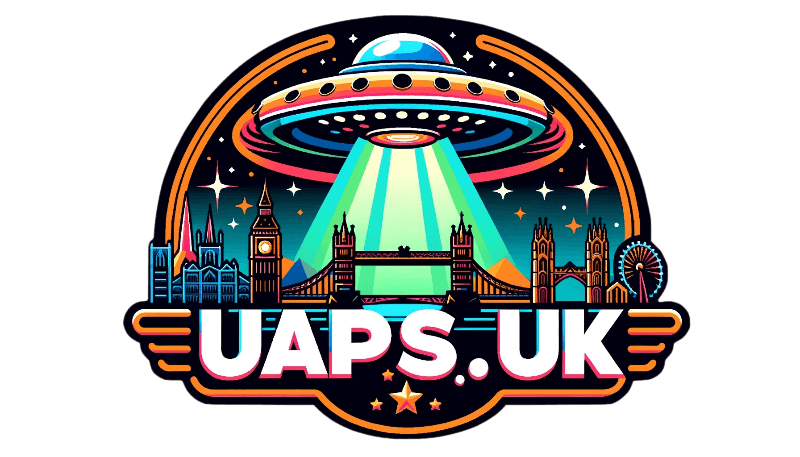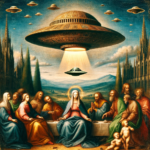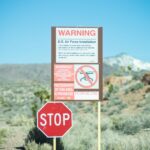The British Government’s involvement in investigating Unidentified Flying Objects (UFOs) has a rich and complex history, marked by intrigue, skepticism, and a relentless quest for understanding. This article unveils the secret history of the UK’s early engagement with the UFO phenomenon, revealing the politics, personalities, and pivotal moments that shaped official policy.
The Genesis: Scareships of 1909
The journey into the unknown began with the ‘scareship’ sightings of 1909. Mirroring similar events in America during 1896-1897, these sightings in Britain marked the first recorded instances of unexplained aerial phenomena. One notable sighting occurred on March 23, 1909, when PC Kettle of Peterborough reported an oblong-shaped craft emitting a buzzing sound and a bright light, moving at high speed across the sky.
Early Speculations and Investigations
These early sightings were perceived as German reconnaissance missions, despite no concrete evidence supporting this theory. The mysterious nature of these ‘scareships’, coupled with their advanced maneuvering capabilities, left the sightings unexplained, piquing official interest.
The War Office’s Response
The continuation of sightings into 1912, amid growing tensions between Britain and Germany, led to parliamentary inquiries by William Joynson-Hicks MP. The inquiries, addressed to the then First Lord of the Admiralty, Winston Churchill, indicated the government’s increasing concern over these unexplained aerial phenomena.
Legislative Actions and Military Involvement
The government’s response included strengthening the Aerial Navigation Act of 1911 and developing military capabilities to address potential threats from these unidentified airships. Despite these efforts, the War Office’s investigations drew a blank, leaving the mysteries of the skies unanswered.
Media Influence and Public Perception
The press played a crucial role in shaping public opinion and government response. While some media outlets speculated about German dirigibles, others suggested hoaxes or mass hysteria, especially regarding reports of landed crafts and interactions with their occupants. Crucially, the government continued to investigate all sightings diligently.
The Emergence of ‘Foo Fighters’
During World War II, the phenomenon of ‘Foo Fighters’ – strange balls of light and small metallic objects observed by pilots – added another layer to the mystery. Official British reports, such as File AIR 14/2800, documented these sightings, reflecting the government’s ongoing interest in these unexplained phenomena.
Official Views and Dismissals
Professor R. V. Jones, a key wartime scientific intelligence expert, played a significant role in the assessment of these sightings. While some reports were dismissed as misinterpretations or hallucinations caused by wartime stress, the government’s stance remained one of cautious observation rather than outright dismissal.
R. V. Jones and the UFO Enigma
Jones, a prominent figure in this narrative, had a storied career in government service, playing a crucial role in countering German technological advances during the war. His post-war involvement in UFO research, though not widely known, is documented in his book “Most Secret War” and other sources.
A British Crash Retrieval?
The story took a sensational turn when journalist Dorothy Kilgallen claimed that the British Government had recovered a crashed UFO. Although widely dismissed, these claims, along with the mysterious ‘Westerham Incident’ of 1946, added intrigue to the government’s involvement in UFO research.
The Ghost Rockets and Official Interest
The post-war ‘Ghost Rocket’ sightings in Scandinavia, involving supposed Russian flying bombs, saw R. V. Jones and British scientific intelligence experts actively engage in investigating these incidents. This engagement highlighted the government’s willingness to explore and understand these aerial mysteries.
The Formation of the Flying Saucer Working Party
Prompted by increasing UFO sightings and media coverage, Sir Henry Tizard, Chief Scientific Adviser at the MOD, initiated the Flying Saucer Working Party in 1950. This secret group was tasked with investigating UFO reports, marking a significant step in official UFO research.
The Working Party’s Findings
The Working Party’s 1951 report, classified as “Secret Discreet”, concluded that UFO sightings could be explained as misidentifications, optical illusions, psychological delusions, or hoaxes. It recommended discontinuing further UFO investigations unless new evidence emerged.
The American Influence and Liaison
The British UFO research effort was significantly influenced by American policies and investigations. Liaison with US authorities and the American stance on UFOs played a crucial role in shaping the British government’s approach to the phenomenon.
The Resurgence of UFO Interest
Despite the Working Party’s skeptical conclusions, a series of high-profile military sightings in the 1950s, such as the RAF Topcliffe and West Freugh incidents, compelled the MOD to revisit and ultimately reverse its stance on UFO investigations. This period marked a renewed official interest in the UFO issue.
The Role of the Media and Establishment Figures
The media’s coverage of UFO sightings and the interest shown by senior Establishment figures like Earl Mountbatten of Burma and Air Chief Marshal Sir Hugh Dowding played a pivotal role in keeping the UFO issue in the public and governmental consciousness.
Mountbatten and Dowding’s Involvement
Both Mountbatten and Dowding expressed open beliefs in the extraterrestrial origin of some UFO sightings. Their status and influence ensured that UFOs remained a subject of serious consideration within government circles.
The Legacy of Early British UFO Research
The early years of official British interest in UFOs laid the groundwork for future investigations and set the template for official responses to unexplained aerial phenomena. The involvement of key figures, the influence of the media, and the interplay of skepticism and belief at the highest levels of government and military form an essential part of this history.
The British Government’s early involvement in the UFO issue is a complex tapestry of intrigue, skepticism, and a quest for understanding the unexplained. From the scareships of 1909 to the Foo Fighters of World War II and the establishment of the Flying Saucer Working Party, the UK’s official engagement with UFOs has been marked by a cautious yet persistent pursuit of the truth behind these mysterious sightings. This history not only sheds light on the government’s approach to UFOs but also reflects the broader societal and scientific attitudes towards phenomena that defy conventional understanding.



